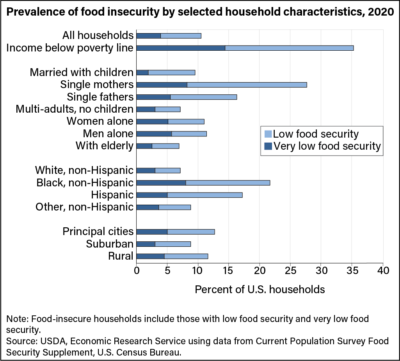 Since the pandemic started back in 2020, the Communique’ editorial staff has witnessed as well as discussed what services local ECW groups provide that have the largest impact in their community. Food by no surprise continued to rise to the forefront of community needs.
Since the pandemic started back in 2020, the Communique’ editorial staff has witnessed as well as discussed what services local ECW groups provide that have the largest impact in their community. Food by no surprise continued to rise to the forefront of community needs.
Many of our groups rose to the need and focused on mask making and looking for ways to support those who were shutoff from their normal daily lives. We have seen the creation of sharing libraries stocked with books donated by church goers, technology support teams reach out to those who may need help with online-video meeting, and the reestablishment of the old-time telephone tree, but in the end, food drove the most basic requests.
It is by no accident that we dedicate this issue of the Communique’ to food. The lessons we learned in 2020 still chime with importance today. The Economic Research Service of the U.S. Department of Agriculture reports that in 2020, 10.5 percent of households were food insecure at least some time during the year, including 3.9 percent (5.1 million households) that had very low food security.
Food insecurity rates are highest for single mother households and households with incomes below poverty line.
In 2020, 35.3 percent of households with incomes below the Federal poverty line were food insecure. Food-insecure households include those with low food security and very low food security. Rates of food insecurity were substantially higher than the national average for single-parent households, and for Black and Hispanic households. Food insecurity was more common in both large cities and rural areas than in suburban areas.
Parents often shield children from experiencing food insecurity, particularly very lo w food security, even when the parents themselves are food insecure. In 2020, 14.8 percent of households with children were food insecure. In about half of those food-insecure households with children, only the adults experienced food insecurity. But in 7.6 percent of households with children, both children and adults were food insecure sometime during the year. In 0.8 percent of U.S. households with children (322,000 households), both children and adults experienced instances of very low food security.
w food security, even when the parents themselves are food insecure. In 2020, 14.8 percent of households with children were food insecure. In about half of those food-insecure households with children, only the adults experienced food insecurity. But in 7.6 percent of households with children, both children and adults were food insecure sometime during the year. In 0.8 percent of U.S. households with children (322,000 households), both children and adults experienced instances of very low food security.
Food insecurity rates differ across States due to both the characteristics of their populations and to State-level policies and economic conditions. The estimated prevalence of food insecurity during 2018–20 ranged from 5.7 percent in New Hampshire to 15.3 percent in Mississippi (data for 2018–20 were combined to provide more reliable statistics at the State level).
As this issue of the Communique’ leaves the printing press to make its way to thousands of ECW members around the world, our prayers turn to the erupting conflict in Eastern Europe. How will the millions of refugees impact food production and consumption in the coming years? — Editor
* Data Courtesy of the Economic Research Service of the U.S. Department of Agriculture
